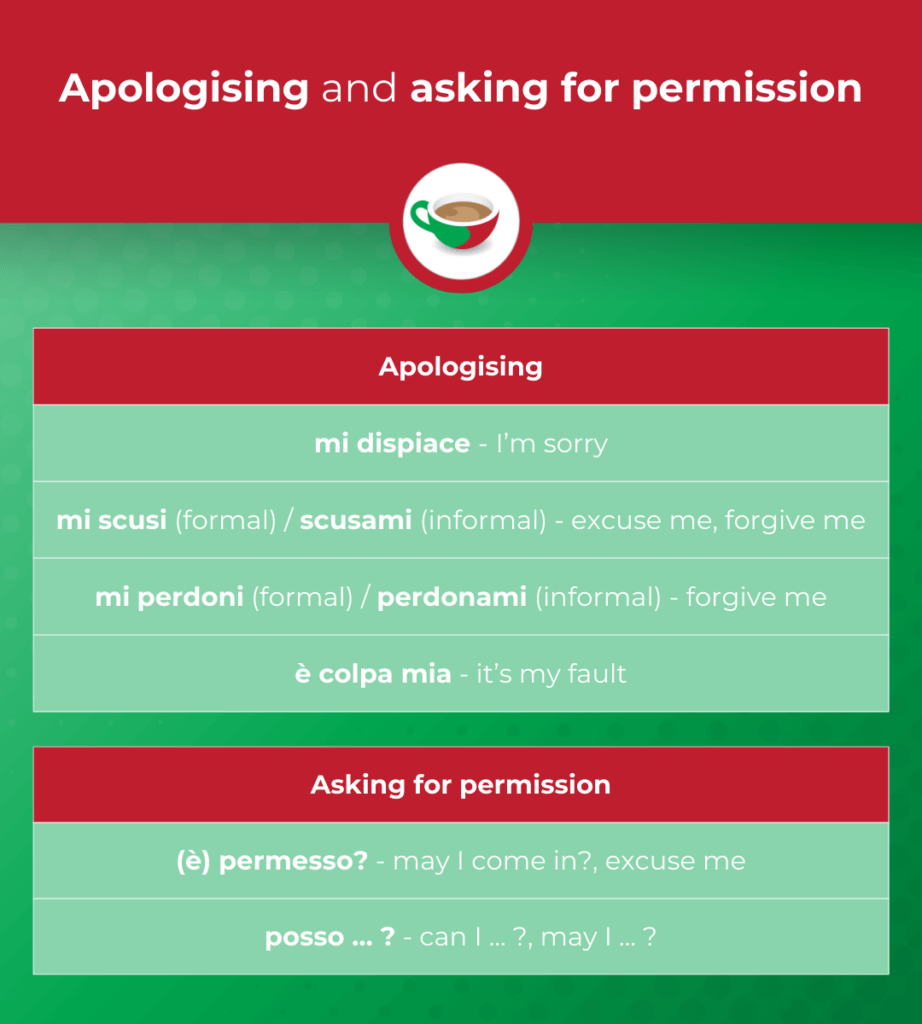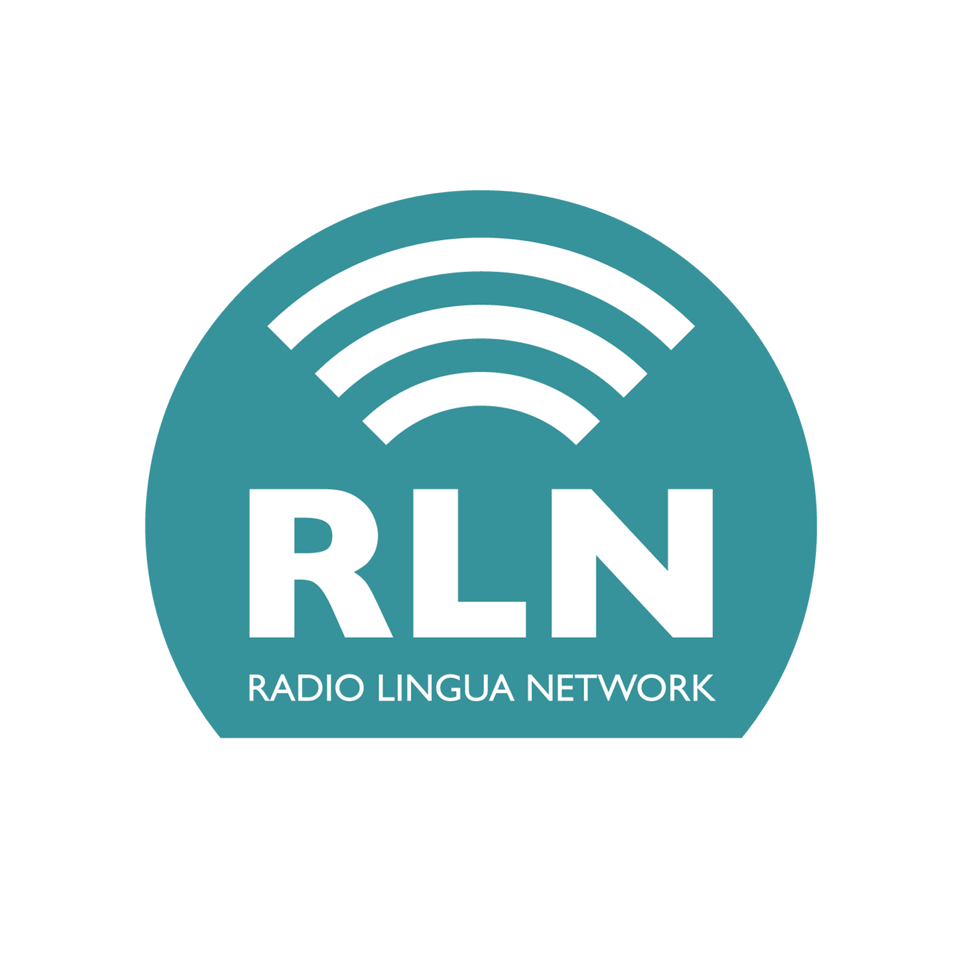“I’m sorry!” – a very common phrase in any conversation, but what is the best way to say sorry in Italian?
There are many ways to say sorry, excuse yourself and ask for permission in Italian, and the one to choose will depend on the context. Not only is it useful to know what they mean, but also the subtleties of each phrase.
The Coffee Break Italian Show is a podcast series of bite-sized, friendly conversations in which we demystify tricky Italian language topics. In the latest episode, Mark and Maurizio dive into the world of Italian apologies. They explore different expressions for saying “I’m sorry” or “excuse me” politely and appropriately in various situations.
Continue reading to find out more and why not listen to the podcast as you go?
Plus, don’t miss our free worksheet at the end to practise what you learn!
How to say you’re sorry in Italian
Let’s begin with four ways to say “I’m sorry” in Italian.
1. mi dispiace
One of the most common ways to say sorry is to use the phrase mi dispiace, or its shortened version, mi spiace. It literally means “it displeases me” and it is used to apologise for something you have done.
2. scusa / scusi
Another common way to apologise is scusa or scusi (the former being used in informal contexts and the latter in formal contexts).
This phrase is also used to attract someone’s attention, for example if you want to stop someone in the street to ask for information:
Scusi, dov’è la piazza?
Excuse me, where’s the square?
You can also say scusami (informal) or mi scusi (formal) – notice the different placement of the pronoun mi in the two versions.
3. perdonami / mi perdoni
If you have done something very serious and you want to say “I’m sorry”, you should probably say perdonami (more literally “forgive me” or “pardon me”). The formal version would be mi perdoni.
In the podcast episode, Maurizio also shares something funny about the use of perdonami or mi perdoni. You can sometimes use it to introduce something that might sound harsh to your interlocutor (similar to the English “I’m sorry, but…”). For example:
Perdonami, ma non sei simpatico.
I’m sorry, but you’re not nice.
4. è colpa mia
What about taking the blame in Italian? In this case, you can say è colpa mia (“it’s my fault”). You can, of course, replace the possessive adjective and use tua, sua, nostra, vostra, loro depending on who you are blaming.
Notice the position of the possessive adjective in this expression. It is, unusually, placed after the noun. Normally in Italian possessive adjectives are placed before the noun and they are introduced by a definite article.
How to ask for permission in Italian
Again, there are a few ways to ask for permission in Italian. Let’s look at the three most common ones.
1. permesso?
When you are in a crowded place and someone wants to pass through, you might hear: è permesso?, or simply permesso? This phrase is used to ask for permission and used especially for these kinds of situations, when you want to go through or enter a room.
2. posso?
You can use the versatile phrase posso…? (“may I…?”) in many different contexts. Remember that the verb to use after this phrase must be in the infinitive. For example:
Posso fare una telefonata?
May I make a phone call?
3. chiedo scusa
In the episode, Mark tells us a story to give some background to this expression. He was recently in the process of checking out of a hotel when the receptionist had to pause to answer the phone. To apologise and explain her brief absence, she said:
Chiedo scusa, devo rispondere al telefono.
Excuse me, I have to answer the phone.
Maurizio explains that chiedo scusa is used to politely excuse yourself from a situation.
Let’s imagine you’re at a party and you’re talking to a group of people. You see someone you meant to talk to and you want to go and chat with them. In this situation you can say:
Chiedo scusa, devo andare a parlare con Antonio.
Excuse me, I need to go and speak to Antonio.
A visual summary of apologising & asking permission in Italian

Now you can apologise in Italian!
Ecco qui! That was a glimpse into the various ways to apologise in Italian.
Remember that the Italian language is rich in nuances, and choosing the right expression can make a difference in your daily interactions. We hope this information has been helpful, and you can put it into practice in your next Italian adventures.
For a little extra practice, download the free worksheet below, and see how much you’ve learned about apologising and asking permission in Italian.
If you found this interesting, make sure you listen to the full podcast episode with Mark and Maurizio on The Coffee Break Italian Show. We will be regularly uploading more episodes for Italian learners, so make sure to subscribe to our podcast feed and our channel on YouTube to find out when the next episode is available.
Plus! To get regular free Italian lessons in your inbox, you can sign up for our short (coffee-break-sized) email lessons that will help you improve your Italian. You will also hear from Mark, the founder of Coffee Break Languages, giving advice for language learners at any level. Sign up below!
Happy Coffee Breaking!



